Clopidogrel-Teva 28’s 75 mg film-coated tablets
$29.40
Description
The instruction for medical use of medicine of Klopidogrel-Tev the Trade name of Klopidogrel-Tev the International unlicensed name Klopidogrel Lekarstvennaya the Tablet form, film coated, 75 mg Structure One tablet contains active agent: klopidogret hydrosulphate of 97.857 mg, it is equivalent a klopidogrela of 75.00 mg, excipients: lactoses monohydrate (200 mesh), cellulose microcrystalline (Avicel PH 101), hydroxypropyl cellulose (Klucel LF), cellulose microcrystalline (Avicel PH 112), krospovidon (Collidon CL), the hydrogenated vegetable oil like I (Sterotex-Dritex), sodium lauryl sulfate structure of a cover: lactoses monohydrate, a gipromelloza 15 sr, the titan dioxide (E171), polyethyleneglycol 4000, ferrous oxide red (E172), ferrous oxide yellow (E172), indigotin (E 132, indigo carmine the aluminum FD&C varnish blue No. 2) the Description of the Tablet, film coated from light pink till pink color, a capsulovidny form, with marking 93 on one party and 7314 on other party. Pharmacotherapeutic group Anticoagulants. Inhibitors of aggregation of thrombocytes iskl. heparin. Klopidogrel. The ATX B01AC04 code klopidogret the Pharmacological Pharmacokinetics Absorption Later properties of oral administration quickly is soaked up from digestive tract. Average peak plasma levels of an invariable klopidogrel (about 2.2-2.5 ng/ml after a single dose of 75 mg) are reached in 45 minutes after administration of drug. The absorption defined from renal elimination of metabolites of a klopidogrel, not less than 50%. Distribution Klopidogrel and his main (inactive) metabolite circulating in blood, form reversible communication with proteins of human plasma (98% and 94% respectively). Binding is not saturable in the wide range of concentration. Metabolism Klopidogrel is exposed to intensive metabolism in a liver. Klopidogrel is metabolized in two main ways: one is mediated by esterases and leads to hydrolysis with education inactive derivative carboxylic acid (85% of the metabolites which are in a blood-groove), another is mediated by various P450 cytochromes. At first klopidogret it is metabolized to an intermediate metabolite, 2-oxo-klopidogrela. The subsequent metabolism of an intermediate metabolite 2-oxo-klopidogrela leads to formation of an active metabolite, thiol derivative klopidogrel. This way of metabolism is mediated by CYP3A4, CYP2C19, CYP1A2 and CYP2B6. An active thiol metabolite quickly it is also irreversible contacts receptors of thrombocytes, suppressing thereby aggregation of thrombocytes. Cmax of an active metabolite increases twice, as after a single load dose of a klopidogrel of 300 mg, and after reception of a maintenance dose of 75 mg within 4 days. Cmax is observed approximately in 30-60 minutes after reception. Removal After reception of a klopidogrel, about 50% is allocated with urine and about 46% with stool within 120 hours after introduction. After a single oral dose of 75 mg the elimination half-life of a klopidogrel makes about 6 hours. Elimination half-life of the main (inactive) metabolite circulating in blood makes 8 hours after single and repeated receptions. The pharmacogenetics of CYP2C19 participates in education, both an active metabolite, and an intermediate metabolite, 2-oxo-klopidogrela. The pharmacokinetics and antithrombocytic effects of an active metabolite of a klopidogrel change depending on CYP2C19 genotype. The allele of CYP2C19*1 corresponds to completely functional metabolism whereas alleles of CYP2C19*2 and CYP2C19*3 are nonfunctional. Alleles of CYP2C19*2 and CYP2C19*3 cause the most part of alleles with reduced function at European (85%) and Asian (99%) slow metabolizator. Other alleles associated with the absent or reduced metabolism meet less often and include CYP2C19*4, * 5, * 6, * 7 and * 8. The prevalence of alleles of CYP2C19 of which average and slow metabolism of CYP2C19 is result was a miscellaneous depending on race / ethnic origin. For Asian population there are limited literary data that does not allow to estimate the impact of genotyping of CYP2C19 on a clinical outcome of events. The patient with the status of a slow metabolizator will have two alleles with the lost function as it is described above. Frequency of genotypes of a slow metabolizator of CYP2C19 corresponds to about 2% for Europeans, 4% of the African race and 14% of the Chinese origin. There are tests for definition of CYP2C19 of a genotype of the patient. Essential differences in exposure and on average the suppression of aggregation of thrombocytes (SAT) between ultrafast, fast and average metabolizator are not observed by an active metabolite. At slow metabolizator the exposure by an active metabolite is 63-71% lower in comparison with fast metabolizator. After use of the dose mode of 300 mg / 75 the mg is observed lowering of antithrombocytic response at slow metabolizator, at the same time the average of SAT (5 microns of ADF) makes 24% (24 hours) and 37% (day 5) in comparison with 39% of SAT (24 hours) and 58% (day 5) fast metabolizator and 37% (24 hours) and 60% (day 5) – average metabolizator. When slow metabolizator are in the mode of 600 mg / 150 the mg, exposure by an active metabolite is more, than at the mode of 300 mg / 75 mg. Besides, SAT makes 32% (24 hours) and 61% (day 5) that it is more, than at the slow metabolizator which were on the mode of 300 mg / 75 mg, but similar to other groups of metabolizator CYP2C19 which is on the mode of 300 mg / 75 mg. The corresponding dose mode for this population of patients is not set. Exposure by an active metabolite decreases by 28% at average metabolizator and for 72% at slow metabolizator whereas suppression of aggregation of thrombocytes (5 microns of ADF) decreases with a difference in SAT in 5.9% and 21.4%, respectively, when comparing with fast metabolizator. Special populations the Pharmacokinetics of an active metabolite of a klopidogrel in these (with an abnormal liver function and kidneys) special populations is unknown. The renal failure After repeated doses of a klopidogrel on 75 mg a day at patients with a serious illness of kidneys (clearance of creatinine from 5 to 15 ml/min.) suppression of the aggregation of thrombocytes caused by ADF (adenosinediphosphate) is weaker (25%), than at healthy subjects, however lengthening of a bleeding time similar as a bleeding time at the healthy subjects receiving 75 mg of a klopidogrel a day. Besides, the good clinical tolerance at all patients is observed. An abnormal liver function After repeated doses of a klopidogrel on 75 mg a day within 10 days at patients with a heavy abnormal liver function oppression of the aggregation of thrombocytes caused ADF, similar as well as at healthy subjects. Average lengthening of a bleeding time in both groups is also invariable. The pharmacodynamics Klopidogrel is a predecessor of active ingredient, one of metabolites of which is inhibitor of aggregation of thrombocytes. Klopidogrel is exposed to metabolism by means of CYP2C19 enzymes, the active metabolite which suppresses aggregation of thrombocytes is as a result formed. The active metabolite of a klopidogrel selectively inhibits linking of adenosinediphosphate (ADF) with his platelet receptor of P2Y12 and the subsequent, caused by ADF activation of the glycoprotein GPIIb/IIIa complex, interfering thereby aggregations of thrombocytes. Owing to irreversibility of binding the thrombocytes which were affected are damaged for all remained term of the life (approximately, 7-10 days), and restoration of normal function of thrombocytes is carried out with a speed corresponding to a platelet cycle. The aggregation of thrombocytes caused by agonists other than ADF is suppressed by blocking of strengthening of the activation of thrombocytes which is carried out under the influence of the released ADF too. As the active metabolite is formed by means of CYP450 enzymes some of which are polymorphic or are suppressed with other medicinal connections, not at all patients the extent of oppression of thrombocytes is sufficient. Pharmakodinamichesky effects from the first day lead Repeated doses on 75 mg a day to considerable oppression of the aggregation of thrombocytes caused by ADF. The inhibiting effect amplifies progressively and reaches an equilibrium state in 3-7 days. In a stage of an equilibrium state the average level of inhibition, is observed at a dose of 75 mg a day and is from 40% to 60%. Aggregation of thrombocytes and a bleeding time gradually returns to initial level, as a rule, in 5 days after treatment cancellation. Indications to Adult patients Prevention of aterotrombotichesky events: – patients with a myocardial infarction (of several days to & lt, 35 days), the ischemic stroke (of 7 days to & lt, 6 months) diagnosed by a disease of peripheral arteries – at patients with a sharp coronary syndrome without rise have segment ST (unstable stenocardia or a myocardial infarction without Q waves), including patients to whom shunting was carried out during performing chrezkozhny coronary angioplasty (ChKV), in a combination with acetylsalicylic acid – at patients with an acute myocardial infarction with rise have segment ST in a combination with acetylsalicylic acid Prevention of aterotrombotichesky and thromboembolic events, including a stroke, in an atrial fibrillation – at patients with an atrial fibrillation who have at least one risk factor of development of cardiovascular reactions, patients with intolerance of antagonists of vitamin K (VKA) and low risk of developing bleedings, in a combination with acetylsalicylic acid the Route of administration and Klopidogrel-Tev’s dosage is appointed inside irrespective of meal. To adult and elderly patients of Klopidogrel-Tev appoint 75 mg in a single dose. At a sharp coronary syndrome without raising of ST of a segment (unstable stenocardia or a myocardial infarction without Q waves) drug is appointed from a single load dose of 300 mg. A maintenance dose – 75 mg a day (in a combination with acetylsalicylic acid in a dose of 75-325 mg/days) within 12 months. The maximum therapeutic effect is observed in 3 months. It is not recommended to exceed a dose of acetylsalicylic acid more than 100 mg, in connection with increase in risk of developing bleeding. In an acute myocardial infarction with raising of ST of a segment drug is appointed in a dose of 75 mg a day (in a combination with acetylsalicylic acid) since a single load dose of 300 mg, using thrombolytic drugs or without them. At patients 75 years are aged more senior Klopidogrel-Tev’s treatment is performed without use of a single load dose. Combination therapy should be begun as soon as possible after emergence of symptoms and to continue at least 4 weeks. In an atrial fibrillation drug is appointed in the form of a single dose of 75 mg, in a combination with acetylsalicylic acid of 75-100 mg a day. In case of the admission of administration of drug of less than 12 hours from the regular schedule, the patient should accept a dose at once, and then to accept the following dose in the usual planned time. If there passed more than 12 hours, the patient should accept a drug dose in the usual planned time, it is not necessary to accept a double dose. A renal failure Experience of treatment klopidogrely patients with a renal failure is limited. Therefore, in case of such patients, drug should be used with care. An abnormal liver function Experience on drug use by patients with an abnormal liver function of moderate severity, inclined to hemorrhagic diathesis, is limited. In this regard, in this population drug has to be used with care. Side effects Bleeding is the most frequent side reaction registered both in clinical trials and in the post-marketing period where it was registered, mainly, on the first month of treatment. The undesirable reactions noted in clinical trials or stated in spontaneous messages are listed below. Often (≥1/100, 1/10) – a hematoma and a traumatic bruise – nasal bleeding – gastrointestinal bleeding, diarrhea, an abdominal pain, dyspepsia – bleeding in the place of a puncture Infrequently (≥1/1000, & lt, 1/100) – thrombocytopenia, a leukopenia, an eosinophilia – intracraneal hemorrhage (it was reported about several cases with a lethal outcome), a headache, paresthesia, dizziness – a hematopsia (conjunctival, ocular, retinal) – ulcer of stomach and duodenum, gastritis, vomiting, nausea, a constipation, a meteorism – rash, an itching, hemorrhage in skin (purple) – a hamaturia – lengthening of a bleeding time, decrease in number of neutrophils, decrease in number of thrombocytes Is rare (≥1/10000, & lt, 1/1000) – a neutropenia, including heavy – vertigo (vestibular dizziness) – retroperitoneal bleeding is Very rare (& lt, 1/10000) – the trombotichesky Werlhof’s disease (TWD), aplastic anemia, a pancytopenia, an agranulocytosis, heavy thrombocytopenia, the acquired hemophilia And, a granulocytopenia, anemia – a serum disease, anaphylactoid reactions – hallucinations, confusion of consciousness – disturbance of flavoring perception – heavy bleeding, bleeding from an operational wound, a vasculitis, hypotension – bleedings of a respiratory path (a pneumorrhagia, pulmonary krovo-a course), a bronchospasm, an interstitial pneumonitis, eosinophilic pneumonia – gastrointestinal and retroperitoneal bleeding with a lethal outcome, pancreatitis, colitis (including ulcer and lymphocytic), stomatitis – an acute liver failure, hepatitis, pathological indicators of functional trials of a liver – bullous dermatitis (a toxic epidermal necrolysis, a syndrome Stephens-Johnson, a mnogoformny erythema), the Quincke’s disease caused by drug intake a hypersensitivity syndrome, the medicinal rash which is followed by an eosinophilia and system manifestations (DRESS syndrome), erythematic rash, a small tortoiseshell, eczema and flat deprive – skeletal and muscular bleeding (a hemarthrosis, arthritis, an arthralgia, myalgia) – a glomerulonephritis, increase in level of creatinine in blood – fever Frequency is unknown – developed as a result of cross-responsiveness the telnost raised chuvstvi-to thienopyridinic drugs, such as tiklopidin and prasugret Contraindications – hypersensitivity to active substance or to drug components – heavy abnormal liver functions – acute bleeding (stomach ulcer, intracraneal hemorrhage) – intolerance of a galactose, deficiency of Lappa lactase or malabsorption of glucose galactose – pregnancy and the period of a lactation – children’s age up to 18 years Medicinal interactions Oral anticoagulants: simultaneous use of a klopidogrel with oral anticoagulants is not recommended as this combination can strengthen bleeding. In spite of the fact that reception of 75 mg of a klopidogrel a day does not change pharmacokinetics of S-warfarin or the international normalized relation (INR) at patients, is long accepting therapy by warfarin, simultaneous use of a klopidogrel and warfarin increases risk of bleeding because of effects which render both drugs on a hemostasis. IIb/IIIa glycoprotein inhibitors: klopidogret it is necessary to apply with care in case of patients who at the same time receive IIb/IIIa glycoprotein inhibitors. Acetylsalicylic acid (ASK): ASK does not change the oppression of the aggregation of thrombocytes induced by ADF caused klopidogrely however klopidogret enhances effect of ASK on the aggregation of thrombocytes induced by collagen. Nevertheless, the concomitant use of ASK on 500 mg twice a day for day does not cause significant increase in the bleeding time caused by reception of a klopidogrel. Between klopidogrely and acetylsalicylic acid perhaps pharmakodinamichesky interaction which leads to the increased risk of bleeding. Therefore, simultaneous use of these drugs should be carried out with care. Nevertheless, klopidogret and ASK are appointed in common term up to one year. Heparin: klopidogret does not demand change of a dose of heparin or does not affect the effect of heparin rendered on fibrillation. Simultaneous use of heparin does not influence oppression of the aggregation of thrombocytes caused klopidogrely. Between klopidogrely and heparin perhaps pharmakodinamichesky to a vzaimody
tvia which leads to the increased risk of bleeding. Therefore, simultaneous use of these drugs has to be carried out with care. Thrombolytic means: safety of combined use klopidogret with fibrinspetsifichesky and nefibrinspetsifichesky thrombolytic means and heparins is investigated on patients with an acute myocardial infarction. Frequency of clinically significant bleedings remains is similar to that that is observed at use of thrombolytic means and heparin together with ASK. Non-steroidal anti-inflammatory drugs (NPVS): combined use of a klopidogrel and Naproxenum increases the hidden blood loss from digestive tract. However, owing to lack of sufficient clinical trials on interactions with other NPVS, it is not clear now whether the increased risk of gastrointestinal bleedings is characteristic of all NPVS. Therefore, simultaneous use of NPVS (including TsOG-2 inhibitors) and the klopidogrela demands care. Other at the same time carried out therapy: as klopidogret it is metabolized to the active metabolite partially by means of CYP2C19, it is expected that use of the medicines suppressing activity of this enzyme will lead to decrease in medicinal concentration of an active metabolite of a klopidogrel. The clinical value of this interaction is not clear. As a precautionary measure it is necessary to refuse simultaneous use of medicines which suppress CYP2C19. Omeprazolum and esomeprazole, fluvoksamin, fluoxetine, moklobemid, vorikonazol, flukonazol, tiklopidin, ciprofloxacin, Cimetidinum, carbamazepine, okskarbazepin and chloramphenicol belong to the medicines suppressing CYP2C19. Inhibitors of a Protonew Pomp (IPP): The omeprazolum in a dose of 80 mg once a day accepted either along with klopidogrely, or with observance of a 12-hour interval between intake of two medicines, reduces exposure of an active metabolite by 45% (load dose) and 40% (maintenance dose). Decrease from 39% (load dose) and 21% (maintenance dose) is connected with decrease in suppression of aggregation of thrombocytes. It is expected that the esomeprazole accepted along with klopidogrely will also lead to decrease in exposure of an active metabolite. As a precautionary measure, it is not necessary along with klopidogrely to apply omeprazolum or esomeprazole. Less significant decrease in exposure of a metabolite are observed in case of a pantoprazol and a lansoprazol. Plasma concentration of an active metabolite decrease by 20% (load dose) and for 14% (maintenance dose) during treatment pantoprazoly in a dose on 80 mg once a day. It is followed by decrease in average inhibition of aggregation of thrombocytes by 15% and 11% respectively. It means that klopidogret it is possible to apply together with pantoprazoly. Proofs that other medicines lowering acidity in a stomach such as H2 receptors blockers (except for Cimetidinum which is CYP2C19 inhibitor) or antacids, interfere with antithrombocytic activity of a klopidogrel no. Other medicines: Clinically important pharmakodinamichesky interactions are not observed, at reception of a klopidogrel together with atenolol or nifedipine or with these both substances. Simultaneous use of phenobarbital or estrogen has also no significant effect on pharmakodinamichesky activity of a klopidogrel. The pharmacokinetics of digoxin and theophylline does not change at simultaneous use with klopidogrely. Antiacid means do not change extent of absorption of a klopidogrel. Phenytoinum and tolbutamide which are metabolized by means of CYP2C9 can be applied with safety along with klopidogrely. Researches of interaction of a klopidogrel with other medicines which are usually appointed to patients with aterotrombozy (besides drugs mentioned above), were not conducted. However for the patients participating in clinical trials of a klopidogrel accepting along with klopidogrely, the most various drugs, clinically significant undesirable interactions were not noted. Diuretics, beta blockers, inhibitors of angiotensin-converting enzyme (APF inhibitors), antagonists of calcium, drugs for decrease in level of cholesterol, coronary vazodilatator, antidiabetic drugs (including insulin), antiepileptic means and also blockers of GPIIb/IIIa-receptors are among the specified drugs. Special indications of Bleeding and hematologic disturbances Because of risk of bleeding and hematologic undesirable reactions during treatment at emergence of the clinical symptoms indicating bleeding it is necessary to make at once the general blood test and/or to carry out other corresponding analyses. Also as well as other antithrombocytic means, klopidogret it is necessary to apply with care in case of patients who can be subject to the risk of the strengthened bleeding connected with an injury, surgical or other morbid conditions and also in case of the patients who are on treatment of ASK, heparin, inhibitors of a glycoprotein IIb/IIIa or non-steroidal anti-inflammatory drugs (NPVS) including TsOG-2 inhibitors. It is necessary to control carefully patients on presence of any symptoms of bleeding, including the concealed hemorrhage, especially, in the first weeks of treatment and/or after the invasive procedures on heart or surgical intervention. Simultaneous use of a klopidogrel with oral anticoagulants as it can strengthen bleeding is not recommended. If the patient has to transfer elective surgical intervention, and the antithrombocytic effect is temporarily undesirable, reception of a klopidogrel should be stopped in 7 days prior to operation. Before any planned operation and intake of any new medicine the patients have to warn therapists and stomatologists about what they accept klopidogret. Klopidogrel prolongs a bleeding time and has to be applied with care at patients with the pathological changes contributing to bleeding (especially, gastrointestinal and intraocular). Patients should be informed that at administration of drug of Klopidogrel-Tev (one or in a combination with ASK) for a stop of bleeding more time can be required and that they should inform the attending physician if they have unforeseen (on localization or duration) a bleeding. The Trombotichesky Werlhof’s Disease (TWD) Very seldom, after use of drug of Klopidogrel-Tev, and sometimes and after short exposure, cases of the trombotichesky Werlhof’s disease (TWD) were noted. It is characterized by thrombocytopenia and mikroangiopatichesky hemolytic anemia accompanied by neurologic changes, dysfunction of kidneys or fever. The TPP is the life-threatening state demanding immediate treatment including a plasma exchange. The acquired hemophilia It was reported that reception of a klopidogrel leads to development of the acquired hemophilia. The possibility of development of the acquired hemophilia should be considered at the confirmed isolated increase in the activated partial tromboplastinovy time (APTT), with bleeding or without. With the confirmed diagnosis of the acquired hemophilia and tracking their state experts have to carry out treatment of patients, and reception of a klopidogrel should be stopped. The recent ischemic stroke In view of lack of data, drug cannot be recommended in the first 7 days after an acute ischemic stroke. P450 2C19 cytochrome (CYP2C19) Pharmacogenetics: In a case to patients who are slow metabolizator of CYP2C19 at a klopidogrel at the recommended doses less active metabolites are formed, and it renders smaller effect on function of thrombocytes. There are tests for definition at patients of a genotype of CYP2C19. As formation of active metabolites of a klopidogrel happens, partly, to participation of CYP2C19, as expected, use of the medications inhibiting effect of this enzyme will lead to decrease in concentration of such metabolites. The clinical importance of similar interaction is at the moment not defined. As a precautionary measure, along with this drug use strong or average effect of CYP2C19 inhibitors is not recommended. Allergic cross-responsiveness As among thienopyridines it was reported about the cross-responsiveness leading to development of allergic reaction it is necessary to estimate whether there is in the anamnesis of the patient a hypersensitivity to other thienopyridines, such as tiklopidin and prasugret. At patients with hypersensitivity in the anamnesis to other thienopyridines, it is necessary to conduct carefully monitoring during treatment on signs of hypersensitivity to a klopidogrel. A renal failure Experience of treatment klopidogrely patients with a renal failure is limited. Therefore, in case of such patients, drug should be used with care. An abnormal liver function Experience on drug use by patients with an abnormal liver function of moderate severity, inclined to hemorrhagic diathesis, is limited. In this regard, in this population drug has to be used with care. Pregnancy and the period of a lactation In view of lack of clinical data on influence of a klopidogrel during pregnancy, as a precautionary measure it is desirable not to apply klopidogret during pregnancy. Preclinical trials did not reveal either direct, nor indirect adverse effects of drug on a pregnancy course, embryonic/fetal development, childbirth or post-natal development. It is unknown whether gets klopidogret in breast milk of the person. Preclinical trials showed that klopidogret gets into breast milk. As a precautionary measure, during drug treatment of Klopidogrel-Tev it is not necessary to continue feeding by a breast. Fertility In preclinical trials it was not proved that klopidogret affects fertility. Features of influence of medicine on ability to run the vehicle or potentially dangerous mechanisms Because of the infrequent phenomena of dizziness or very rare side effects drug should be used with care when driving and working mechanisms. Overdose Symptoms: lengthening of a bleeding time, bleeding. Treatment – transfusion of platelet concentrate. A form of release and packing On 7 tablets in blister strip packaging of Alu/Alu of type consisting of a film of the polyvinylchloride or polyvinylidene chloride and aluminum foil varnished and from a film of the polyvinylchloride polyamide varnished and aluminum foil. On 4 blister strip packagings together with the instruction for medical use in the state and Russian languages put in a box of cardboard. Storage conditions In original packing at a temperature not higher than 25 ºС. To store out of children’s reach! 2 years not to apply a period of storage after expiry date! Prescription status According to the prescription the Name and the country of the Teva Pharmaceutical Industries Limited manufacturing organization, Israel the Name and the country of the owner of the registration certificate of Teva Pharmaceutical Industries Limited, Israel the Name and the country of the Teva Pharmaceutical Industries Limited organization packer, Israel the Address of the organization accepting in the territory of the Republic of Kazakhstan claims from consumers on quality of products (goods): 050000 Republic of Kazakhstan Almaty, Al-Farabi Ave. 19, BC Nurly-Tau the body of 1 B, office 603
to Develop ratiofarm Kazakhstan LLP
Additional information
| Ingredient |
|---|





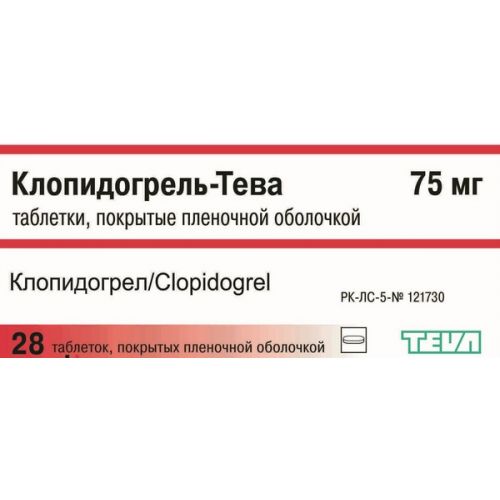

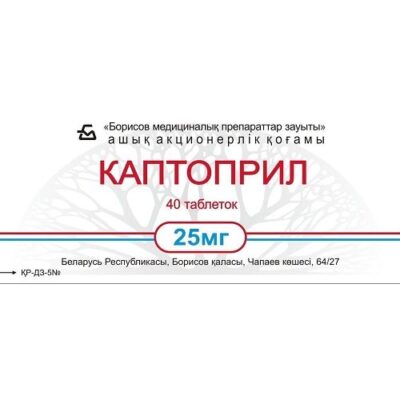
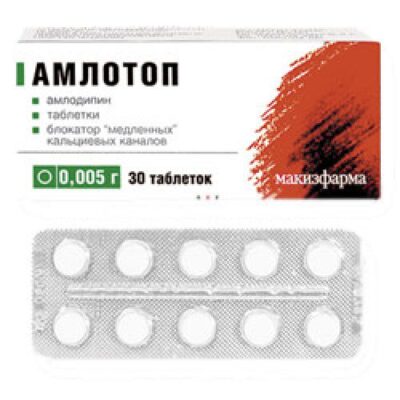
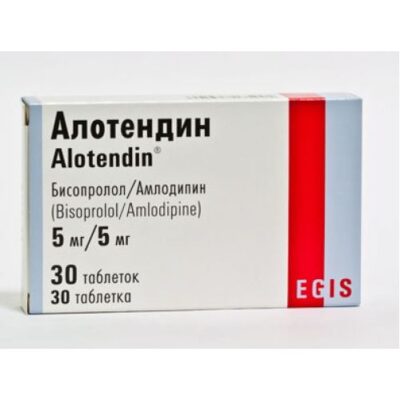
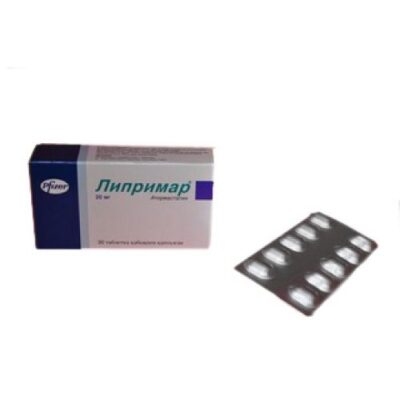
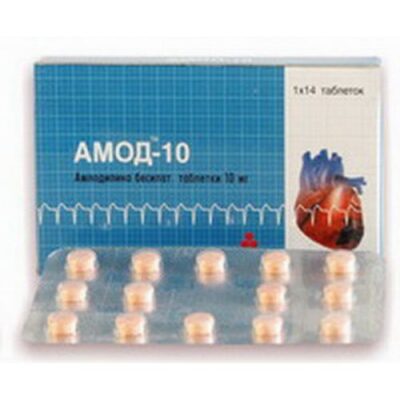
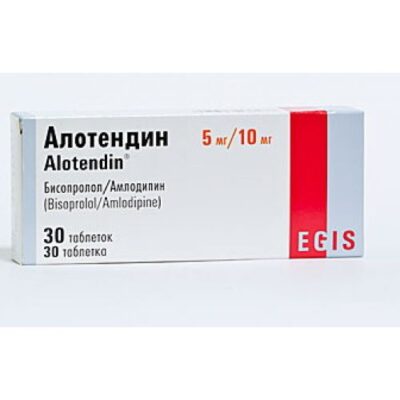
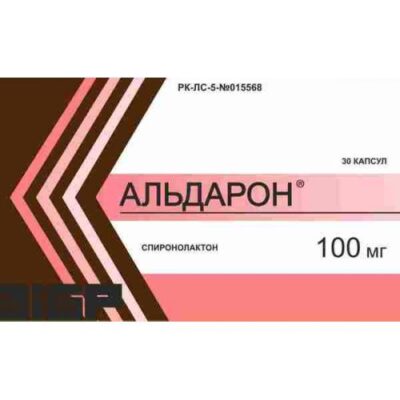
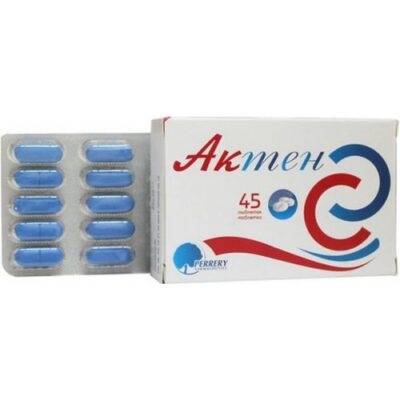
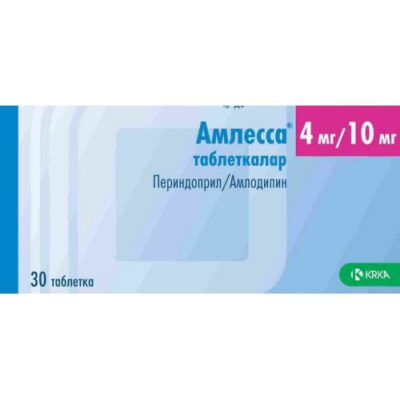






Reviews
There are no reviews yet.